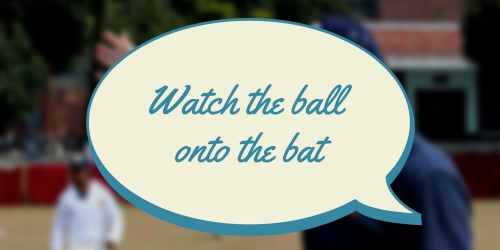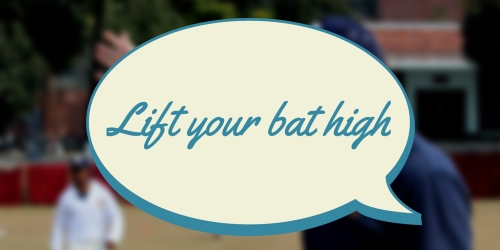|
 Everyone's a cricket coach. Everyone's a cricket coach.
Or so it seems these days. Advice comes from every angle; coaches, family members, the internet and even passers-by calling out. That would be great if it all matched up, but most of the time it is in direct conflict with another piece of advice.
Then there are the myths and clichés on top. The advice that sounds good, and makes the advisor sound wise and clever. In fact, it's based in no more evidence than it was overheard on TV. So it must be true for everyone, right?
It's enough to make you go back to bed instead of picking up the bat and dealing with the swirl of advice in your head.
So, here is some clarity for you: Three simple bits of advice we have all heard (or perhaps even given) that don't make as much sense as they seem. Once you know that these things are not always true, you can get on with getting back to the simplicity of hitting the ball with a clear mind and a confident outlook.
You are welcome.

1. "Watch the ball on the bat"
Studies have show that this is not how the eyes work when a ball is moving towards you.
Instead, we look at the bowler as he is releasing the ball and make a prediction and move our eyes to where the ball is going to be. The better the batsman, the faster this happens. You might argue that's all good in theory, but you can't advise a player to do that: It's a naturally occurring reaction we do subconsciously. So you have to advise the player to "watch the ball" and let nature do the rest.
That would be right, except some people don't watch the ball very hard. When they do, they tense up and lose their natural rhythm. For these people, watching the ball intensely is damaging advice. Lucky for you, it's easy to work out your visual preference.

2. "Get to the pitch of the ball"
Again on the surface, this seems solid advice. If you can get your front foot to the ball, it's a half volley and it's a four.
How people read this advice is to take a longer stride forward. After all, that's good footwork. For many people this works well as they naturally play better leading with the foot. For others, who are more inclined to lead with the head, a big stride is a poor position.
So, it's more important to get to the line of the ball than the length when you play forward. This works for botht those who lead with head and those who lead with feet. Then, if you naturally have a big stride you can let it happen. If you naturally have a smaller stride you will hit more "on the up" more often, but will be just as effective.
If you want to know which method is your way, take a look at your chin when you drive.

3. "Lift your bat high"
When I coach beginners, I often see the habit of barely lifting the bat up at all in the backswing. The 8 year old instead tries to get power by "poking" at the ball with the bat. The obvious advice is to tell the player to lift the bat up higher to get a swing going and get more power.
My theory is that this has translated into older and experienced players getting told that lifting the bat high will generate more power like, say, a golf swing. What it is really about is rhythm and timing.
Some people, including Kevin Pietersen, can generate a lot of power from a low backlift (about stump height). Others, notably Brian Lara, got timing from a big backswing. So it's more important to do what comes naturally.
Experiment with what feels better overall. If your backlift is low but you can "muscle" the ball then do it that way. If you prefer to caress the ball you might feel better with more firepower coming from a longer downswing.
Discuss this article with other subscribers
|

.jpg)



.jpg)

